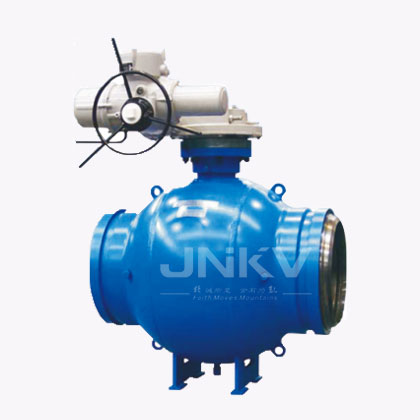

 Return
Return

Structural Characteristics of Electrically Welded Ball Valve
1. Advanced seats: Seats designed with years of experience in ball valve manufacturing have low friction coefficient and small operating moment. Various seat materials, wide range of applications.
2. Stem anti-flying structure: Steps are set at the lower part of the stem to install the stem from the inside of the valve body to prevent the stem from flying out.
3. Anti-static function: Anti-static spring is set between sphere and valve body or stem, which can deduce the static electricity generated in the process of switching action.
4. Fire-resistant structure: advanced fire-resistant design. After fire, the leaking parts are designed as flexible graphite filler or stainless steel clip graphite to meet the fire-resistant requirements and meet the requirements of API6FA and API607.
5. When the handle is operated, the flat head valve stem is used, and the connection with the handle will not be dislocated, thus ensuring that the switch state indicated by the handle is consistent with that of the valve. In order to prevent the valve switch from being misoperated, a lock hole is set in the full-open and full-close position to ensure the valve is in the correct position.
6. Fire-resistant structure: advanced fire-resistant design. After the fire, metal-to-metal seals are formed after the leakage seals are burned, which conform to the requirements of API6FA and API607. Where the fire resistance requirements are strict, the seals are sealed with flexible graphite fillers and graphite gaskets with stainless steel clips to ensure no leakage. (Please note when ordering: Full Fire-proof FB)
7. The valve adopts the most advanced supporting plate structure at home and abroad, which improves the service life of the valve and reduces the operating torque of the valve. The service life of the valve is greatly prolonged.
Standard for Electrically Welded Ball Valves
GB standard
1. Design and Manufacture: GB12237
2. Structure Length: GB12221, GB/T15188.1
3. Connection Dimensions: JB/T79, GB9113, HG20592 and other welding valves according to JB12224 (users need to provide piping size)
4. Inspection and experiment: GB13927, JB/T9092
API standard
1. Design and Manufacture: API 6D, API 608
2. Structure Length: API6D, ANSI B16.10
3. Connection size: ANSI B16.5 is larger than 24. "Weld joint of MSS-SP44 or API 605 welding valve should be ANSI B16.25 (user needs to provide piping size)
4. Testing and experiment: API 6D, API 598
Other standards
1. Design and Manufacture: BS5351
2. Structure length: BS2080/JIS 10K, 20K according to JIS B2002
3. Connection dimensions: ANSI B16.5, JIS B2212, JIS B2214
4. Inspection and experiment: BS6755, JIS B2003